
It’s not enough to know the technical aspects of how to photograph strangers, but photographers also need to prepare themselves mentally for the engaging process of taking portraits within street photography.
I’ll walk you through how to photograph strangers whether you’re out on the streets or trying out your portrait photography in a local park.
Photographing strangers is a unique experience and one that I can’t find a comparable situation for in any other area of photography. Working with live subjects generally means the photographer needs to direct, pose and praise their subject – but when photographing strangers you are flying blind to a large degree.
You’ll have become a reactionary photographer who is always prepared to shoot and always watching out for fast changes in the landscape ahead of them. You’ll miss lots of shots – be prepared for that. They may feel great when you first take them but upon review you’ll become more critical as time goes by – and that’s not a bad thing.
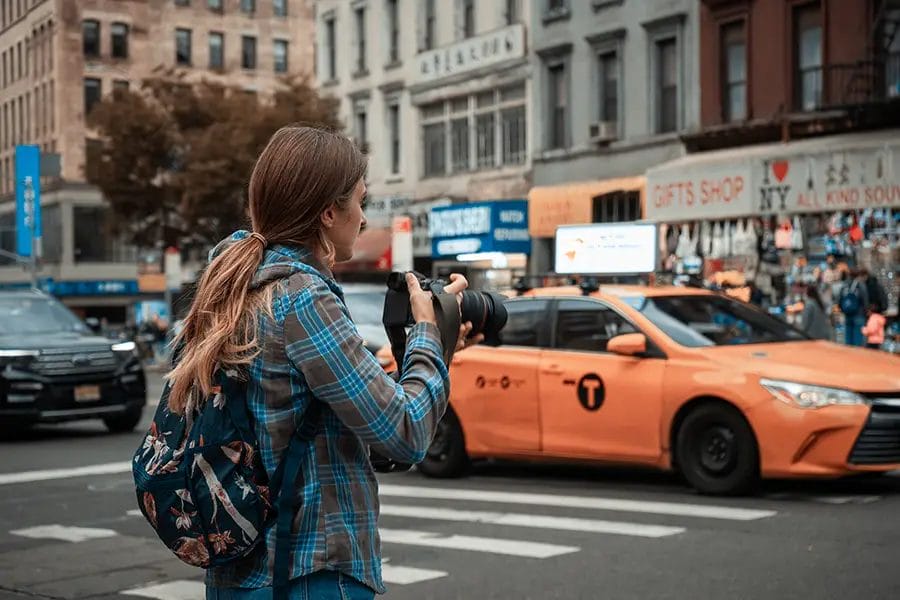
The best attitude when it comes to photographing strangers is to be a shadow, but also be invisible. You want to stay close to the action, but also not stand out. With that in mind, you’ll need a small camera but also a lens with good reach.
The bigger the camera, the more you’ll stand out as a photographer when shooting on the streets. Cameras such as the Fujifilm X100 series, Ricoh GR Digital III, Olympus PEN-F or Panasonic LUMIX DC-LX100 II are compact and powerful.
The last thing you want is a camera with a slow autofocus reaction, so if you are buying a second hand camera, test that in advance if you can.
When it comes to lenses, typically I’d say to have the options of focal lenses between 20-200mm. That’s quite a big range and can result in a large lens which can make you stand out – so how do you get around it?
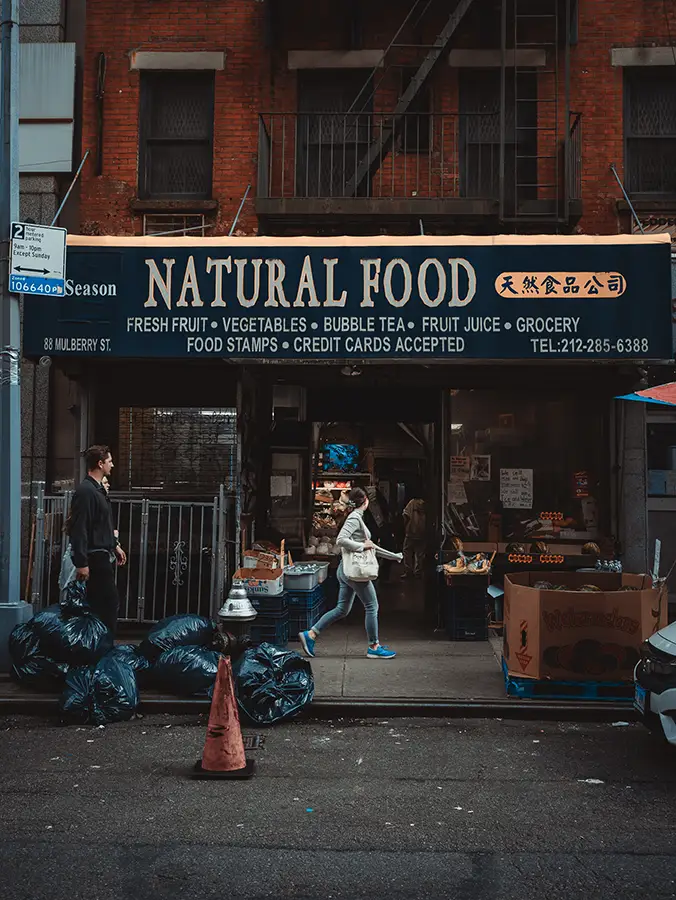
There’s no ideal solution unfortunately, unless you become more confident and willing to get close to your subject. The closer you can get the smaller your focal length choices need to be.
The Fujifilm X100 camera series, for example, come with a fixed 23mm lens. With the APS-C crop factor taken into consideration, this is more like 35mm which sits somewhere between a good landscape and portrait focal lengths.
Having a fixed focal length will force you to get closer to your subjects otherwise your composition may look weak.
Firstly, set your camera up to shoot in a frame burst mode. As I said at the start, your chances are fleeting when it comes to photographing strangers. You won’t get two bites at the cherry often so the more shots you can take quickly the better your chances become.
Keep your shutter speed high too. Somewhere between 1/500th-1/1000th – reason being is that your camera will be in constant motion and your subject might be too. To compensate for this movement, it’s best to keep the shutter speed fast to reduce motion blur and camera shake.
Change the aperture to its widest point F/3.5 or wider. This will help isolate your subject when they are on their own in the shot. If you’re photographing groups of strangers, make the aperture a little smaller to create a deeper depth of field.
Use the ISO as the exposure adjuster. After setting your shutter speed and aperture, if the exposure looks too dark or bright, re-adjust it using the ISO. Don’t worry so much about digital noise, it can easily be reduced using denoise tools in Lightroom, for example.
When it comes to auto focus, keep it simple and use a single point AF in the centre of your frame. Avoid using a face tracker autofocus mode, because in busy locations tracking AF can move the focus off the stranger you want to shoot.
A single AF mode is easier to control, and you always know where the focus point will be (in the centre of the screen).
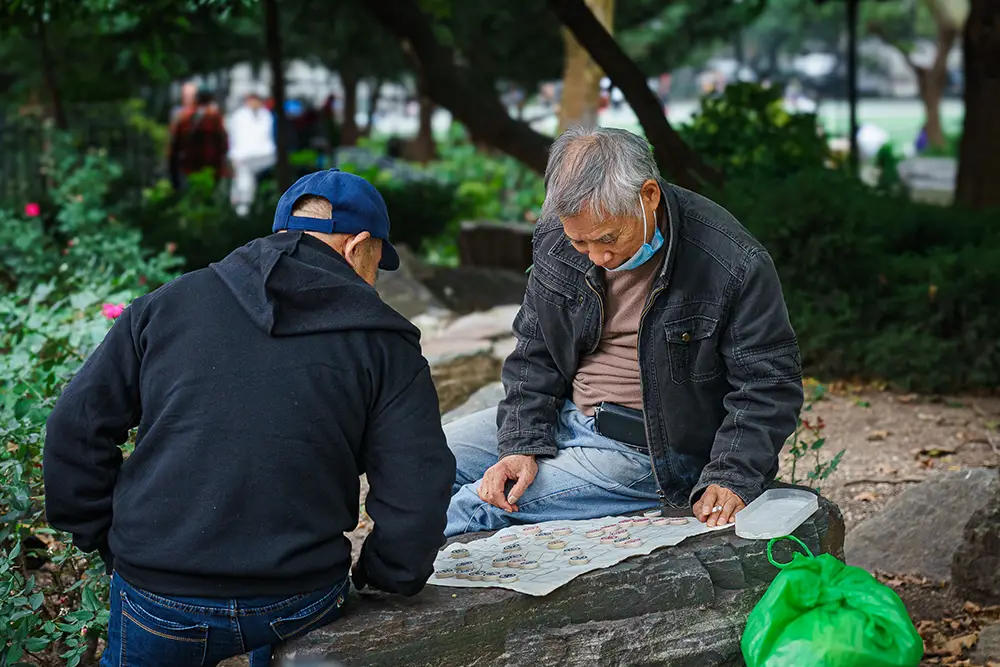
This is the mental aspect I spoke of earlier, because photographing strangers, isn’t a disconnected type of photography – it’s quite the opposite.
You’ll choose your subjects based on who looks appealing to you. This will differ photographer to photographer. We all find people interesting to varying degrees which informs who you take photos of.
If you’ve got time, watch your subject, and consider what makes them ‘special’ to you. Is it their clothing? The way they walk or their overall vibe? Whatever it is, try to capture it in your shots.
If you’re photographing strangers who are looking at you, aim to shoot confidently and don’t look like you’re doing it perversely. Being nervous and backing out of the shot if they look at you, only makes you look guilty. Take the shot as they look at you and deal with any situation afterwards.
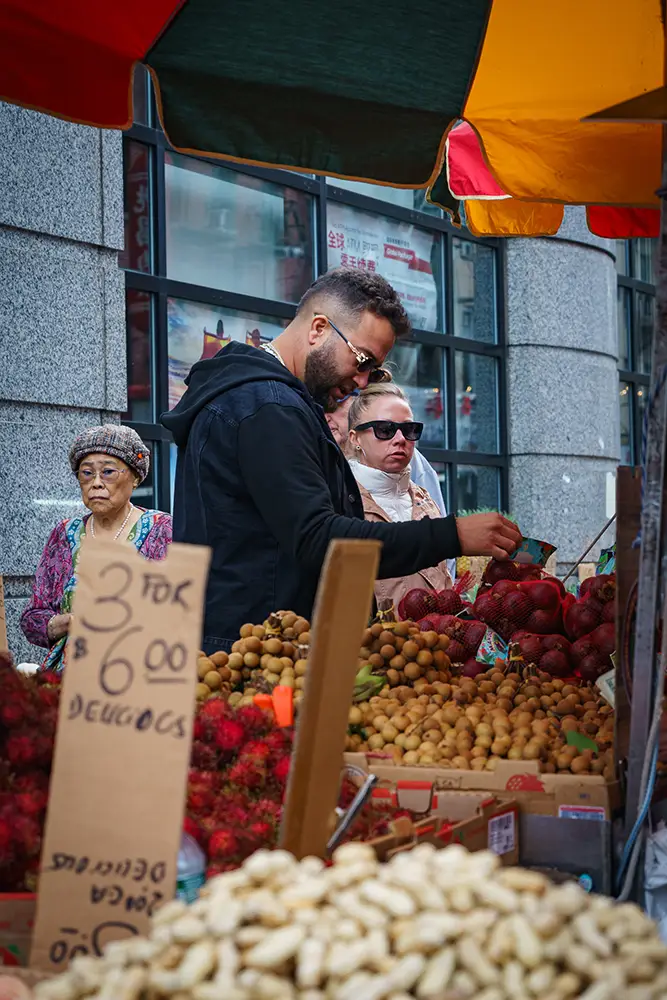
If you spot a particular person you want to take a photo of, why not approach them directly and ask?
Seems obvious, but even this initial engagement is too much for introverted photographers or beginners. While this is understandable, sometimes the stronger shots come from having time to set up your shot with a willing subject.
Ask them in this order to establish their understanding and answer any queries they’ll have. If they say no, that’s fine – thank them and walk away. Get used to rejection and put yourself in their shoes – how would you like to be asked?
Photographing strangers is a game of numbers, the more you ask, the more success you’ll have and the more confident you’ll become.

It’s better to ask for forgiveness than permission.
If your subject comes over to you and asks what you’re doing, show them the shots, tell them who you are, show them your website/portfolio – looking legit will give them confidence you’re doing it for the art of photography and nothing nefarious.
Generally speaking, from experience, I’ve never had anyone approach me after taking their photo on the streets.
Try to avoid causing a scene or argument. The last thing you want is unwanted attention or threats of legal action. While taking photos of strangers in public places isn’t illegal it can concern people because of the world we live in. Be kind, honest, flattering and upfront. The more you do it, the more confident you’ll become.
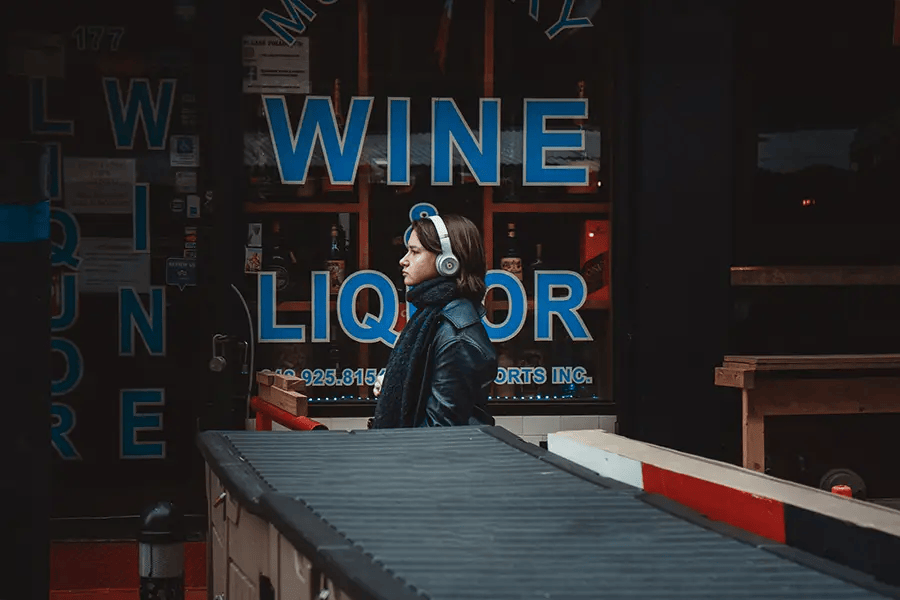
There are very few laws governing street photography and taking photos of people in public. While it’s always wise to double-check the laws in your country but in the UK, at least, there is no expectation of privacy when in public.
What this means is that it’s fair game and legal to take photos of the general public, providing you are on public property to begin with. You might be asked to move if you’re standing on private land but no one can legally force you to delete your photos either way – they are your intellectual property.
With all that said, it is sensible to think about who you are photographing – and how that might look. Avoid taking photos of children in public. Unfortunately there are too many negative connotations to such actions, even if you’re being above board with your photos. It can upset and worry parents, so it’s best to avoid photographing children in public places in general.
Find everything you need to know in this guide to polarizer lens filters for photography. How do they work and which is the best to buy?
Discover TOP features in the Lightroom CC mobile app with this guide for enhancing your photo editing skills. For desktop and tablet too.
Shooting sunsets using amazing 5-in-1 magnetic lens filters from Kentfaith, the 1st choice for photo & video products.
Learn the basics of photography – fast – with our FREE 60-Second Photographer online course. Each class is short and sharp with simple, actionable steps that give you immediate results.
x 30 lessons

© iPhotography™
Become a confident and competent photographer in less than 30 minutes!
Before you leave, make sure you’ve secured your FREE online photography course (worth £29.99)
Each class is just 60-seconds or less making it the fastest and easiest way to learn photography!